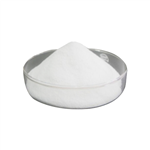Distearyl Thiodipropionate: Synthetic Method and Significance in Antioxidant Synthesis and Automobile Coatings
Mar 25,2024
General Description
The synthetic method for Distearyl thiodipropionate involves mixing hydrogen sulfide, lower acrylate ester, weak base amine catalyst, and polar solvent, followed by rectification, transesterification, and fractionation steps. This method offers advantages like low cost and energy consumption. Distearyl thiodipropionate is significant in antioxidant synthesis, aiding in the preparation of hindered phenols with high purity and excellent antioxidative properties. It also plays a crucial role in automobile coatings, particularly in cathodic electrodeposition coatings, reducing yellowing and preventing delamination. Overall, its use enhances the durability and appearance of automobile coatings effectively.

Figure 1. Distearyl thiodipropionate
Synthetic Method
Distearyl thiodipropionate, a thioester antioxidant, can be synthesized using the following method. First, hydrogen sulfide, lower acrylate ester (such as methyl acrylate), weak base amine catalyst (such as C1-10 linear-chain or branched alkyl monoamine, monoamine, or polyamine), and a polar solvent (such as water) are mixed together. The reaction takes place at a temperature ranging from 20 to 150°C under a pressure of (-0.099)-2 MPa. Next, rectification is carried out at a temperature of 50-200°C under a pressure of (-0.099)-2 MPa to obtain lower thiodipropionate diester. Then, this diester is mixed with higher aliphatic alcohol and an alkali catalyst (such as titanate ester). The transesterification reaction occurs at a temperature of 50-200°C under a pressure of (-0.099)-2 MPa. Finally, fractionation is performed at a temperature of 50-250°C under a pressure of (-0.099)-1 MPa. This synthetic method offers several advantages, including low cost, low energy consumption, a simple process, and high safety and efficiency. In conclusion, the synthetic method of Distearyl thiodipropionate involves mixing hydrogen sulfide, lower acrylate ester, weak base amine catalyst, and polar solvent, followed by rectification, transesterification, and fractionation steps. 1
Significance in Antioxidant Synthesis and Automobile Coatings
Preparation of hindered phenols
Distearyl thiodipropionate plays a crucial role as a catalyst in the process for preparing hindered phenols, specifically as antioxidants. The process involves the transesterification of certain compounds to produce hindered phenols with specific chemical properties. In this process, Distearyl thiodipropionate is used alongside other composite catalysts such as organotin, phosphite, or thioester. By utilizing this method, hindered phenols with desirable characteristics can be synthesized efficiently. For instance, the reaction of pentaerythritol with Me 3-(3,5-di-tert-butyl-4-hydroxyphenyl)propionate, facilitated by Distearyl thiodipropionate and other catalysts, yields Antioxidant 1010 with a high purity of 99.35%. These resultant compounds demonstrate excellent antioxidative properties. The advantages of this process include a high conversion rate exceeding 98% and superior product purity. Such hindered phenols find widespread application as antioxidants in various industries due to their effectiveness in preventing oxidation processes and enhancing the stability of materials. Overall, the use of Distearyl thiodipropionate as a catalyst in the preparation of hindered phenols underscores its significance in facilitating the synthesis of valuable antioxidant compounds with favorable properties for industrial applications. 2
Automobile coatings
Distearyl thiodipropionate, a type of S-containing antioxidant, plays a crucial role in automobile coatings, particularly in cathodic electrodeposition coatings. When added as part of a combination with a phenolic antioxidant to the coating formula, Distearyl thiodipropionate helps reduce yellowing caused by overbaking and prevents delamination of the topcoat from the electrodeposition film due to weathering. In automobile coatings, especially those used for cathodic electrodeposition, formulations containing Distearyl thiodipropionate alongside other key components like an epoxy-amine binder, polyisocyanate crosslinker, and specific antioxidants such as Cyanox 1790, Cyanox LTDP, or Cyanox STDP have demonstrated excellent performance. These coatings exhibit low yellowing color values and achieve a high delamination rating of 8 on a scale of 0 to 10, where 10 represents a perfect pass. This highlights the effectiveness of Distearyl thiodipropionate in enhancing the durability and appearance of automobile coatings under various environmental conditions. 3
Reference
1. Guo JY. Synthetic method of thioester antioxidant from hydrogen sulfide, lower acrylate ester, and higher aliphatic alcohol. 2014. Patent Number: CN103864652.
2. Guo YW. Process for preparation of hindered phenols as antioxidants. 2009. Patent Number: CN101508644.
3. Chung DY, Kirshenbaum KS. Cathodic electrodeposition automobile coatings containing an antioxidant additive. 1993. Patent Number: US5205916.
- Related articles
- Related Qustion
- Distearyl thiodipropionate: properties, applications and safety Sep 20, 2023
Distearyl thiodipropionate is a versatile antioxidant and UV stabilizer used in cosmetics. It protects against free radicals and UV damage and preserves moisture.
- Applications of Distearyl thiodipropionate as an Antioxidant Nov 21, 2019
Distearyl thiodipropionate is potent antioxidant, usually as additives for oxidation resistance applied in rubber, soap, lubricating oil, grease, polyolefin, etc.
Electrochemical synthesis of 2,5-Dichloroaniline offers an eco-friendly approach with high yields, while its detection in estuarine water highlights potential ecosystem impact.....
Mar 25,2024APIN-methylbenzamide is an amide derived from benzamide. This organic compound has unique chemical properties and versatility.....
Mar 25,2024APIDistearyl thiodipropionate
693-36-7You may like
Distearyl thiodipropionate manufacturers
- ANTIOXIDANT TRUELICHT DSTDP
-

- $0.00 / 1KG
- 2024-06-12
- CAS:693-36-7
- Min. Order: 1drums
- Purity: 98.0%
- Supply Ability: 1000tons
- Distearyl thiodipropionate
-

- $0.00 / 25Kg/Drum
- 2024-06-12
- CAS:693-36-7
- Min. Order: 1KG
- Purity: 99%
- Supply Ability: 500mt
- Distearyl thiodipropionate
-

- $0.00 / 1kg
- 2024-06-11
- CAS:693-36-7
- Min. Order: 1kg
- Purity: 99%
- Supply Ability: 50000kg





